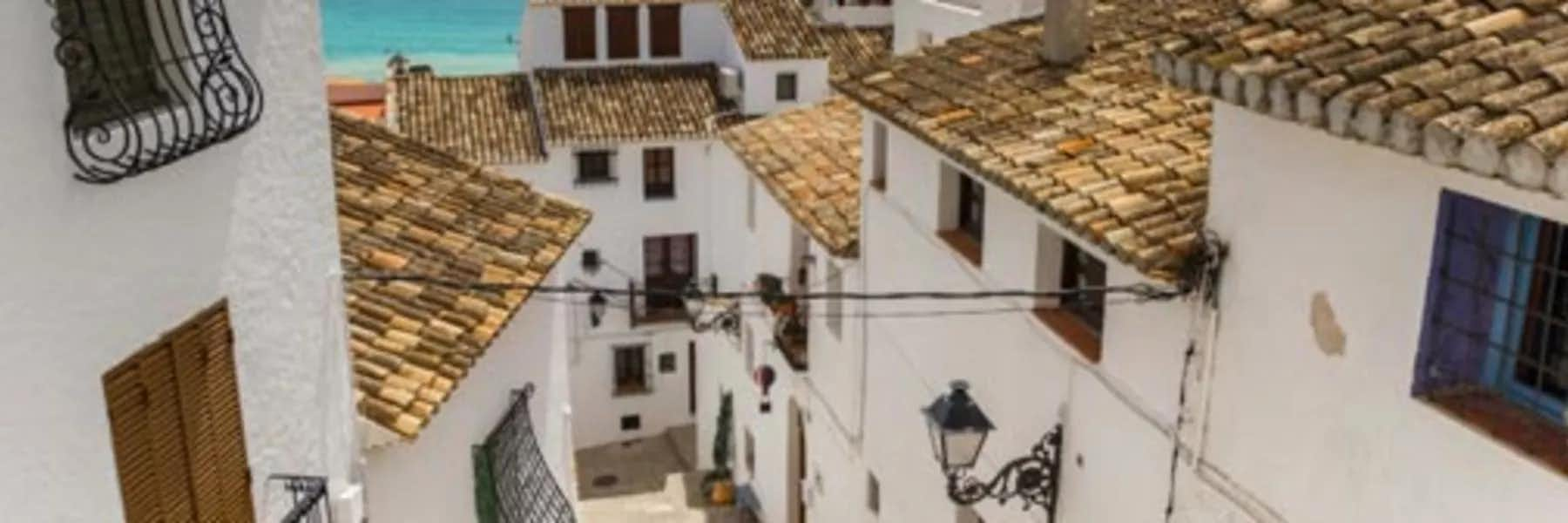Wafts of salt and sea mix with the delicate scent of orange blossom; it’s springtime in Altea, the hidden jewel of Spain’s Costa Blanca (White Coast).
The sun gently soothes the tingle of a cool breeze whispering off the Mediterranean Sea. As I walk along the seashore, a rhythmic melody swells and falls as the waves strum smooth pebbles in their wake. On the edge of town, the billowing bamboo and cattails of the Algar estuary protect throngs of swans, geese, and ducks. It’s hard not to love Altea.
As Maryanne Parnell, an expat in the pueblo for almost six years, says, “In Altea we are spoiled for choice, with mountains behind us and the sea in front, every type of shop, bar, and restaurant you could need, but still plenty of charm and a Spanish soul.”
Altea offers a warm Mediterranean microclimate coupled with a sublime quality of light. Located on Spain’s eastern coast, 45 miles north of Alicante, it nestles at the foot of the Sierra de Bernia Mountains, with the Sierra Helada promontory to the south. Its special light has attracted a diverse and celebrated art culture, which in turn has attracted a well-respected art university, the Miguel Hernández.
Diversity is a local theme, as Altea is about two-thirds local and the remaining third a mix of international expats. A high-spirited babel of languages fills the old-town favorite AlteArte on Thursday nights for the bar’s Language Exchange. The focus during this hour is learning Spanish and English, but in doing so I find out about everything from local customs to helpful information. It’s a great way to make new friends while sipping a Spanish beer, wine, or AlteArte’s excellent mojito.
I first rented my 1,000-square-foot, two-bedroom, one-bathroom apartment on Altea’s seafront for $450 a month. A little later, my wife and I ended up buying it. When I sit on my living room sofa, I can see only the sea, just as though I were on a cruise ship. The sea ushers in the cool breezes with a swing of the balcony door. Depending on location, something similar could cost anywhere from three to six times the price in the U.S. Utilities average less than $100 a month in total, as the mild temperatures mean less energy consumption.
Real estate for sale, though not as dramatically low-priced as rentals, is still a huge bargain compared to even the cities with the lowest cost of living in the U.S. In the old town or on the seafront, prices for a standard two-bedroom, one-bathroom property start at $124,000, which is a pretty good deal for southern European beach living. If you have a higher budget, the options are much more varied. In the old town, high-end homes rarely come on the market. On the seafront there are properties for sale, but they usually start at over $500,000. There’s rarely any need for heating in winter, or air conditioning in summer.
And Spain’s healthcare is excellent. It’s seventh in the world, according to the World Health Organization. U.S. and Canadian citizens getting residence in Spain will generally need to have private health insurance. If you’re in decent health and between 55 and 65 years of age, expect to pay roughly $110 to $160 a month for private health insurance.
Like anywhere in Spain, the whole town gets periodically involved in large-scale local celebrations that are frequent, varied, and always musical. In fact, music is a tradition that runs so deep that Altea, with a population of only 23,000, boasts a very talented 160-piece orchestra that you can enjoy monthly at the local 400-seat Palau Altea (Altea Palace). They also play at various outdoor venues in the spring, summer, and fall.
Related Articles
There Are Many Reasons for Moving to Spain
